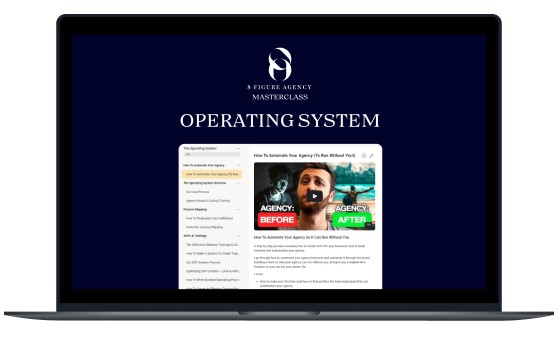When it comes to early-stage startups and growing businesses, the conversation around how to distribute equity to team members is becoming more relevant than ever. If you’re an agency or business owner, chances are you’ve faced, or will soon face, questions from your employees about receiving equity. Equity distribution is essentially the process of allocating ownership shares or stock options to your team members. It’s a strategy used to not only reward and motivate employees but also to attract and retain top-tier talent.
The importance of fair equity allocation cannot be overstated. Get it right, and you’ve got a highly motivated team, aligned with your business goals and driven to contribute to the company’s success. However, navigating how to distribute equity to team members can be complex. It’s imperative to strike a balance of equity split that reflects the value each team member brings to the table, their role, and their contribution to the company’s growth while aligning with fair market value.
In this blog post, we’ll explore effective strategies for how to distribute equity to team members, guiding you through the process of ensuring fair market equity allocation. Whether you’re pondering how to initiate this conversation or looking for the best practices to implement it, we’ve got you covered.
At 8-Figure Agency, we have the expertise and experience to help you navigate equity distribution successfully and scale your agency to 8-figures and beyond.
Book A Consultation With Us At 8 Figure Agency Today!
Understanding Equity
First, let’s lay a solid foundation by understanding what exactly we mean by “equity”.
Types of Equity
Here are three types of equity commonly used by businesses:
- Common Stock: This is the most basic form of stock that represents ownership in a company. It’s usually given to founders, employees, and investors – giving them the option to vote on company matters as well as receive dividends.
- Preferred Stock: Preferred stock gives shareholders certain rights over common stockholders, such as priority when it comes to dividends or liquidation. However, it typically does not come with voting rights.
- Stock Options: Stock options give employees the right to purchase company stock at a predetermined price in the future. They are often used as a form of compensation or incentive for employees.
Equity Vesting: Basics and Importance
Equity vesting is a process where your team members earn their equity stakes over time. This approach is fundamental because it aligns team members’ contributions with the company’s growth, ensuring that rewards are matched with the effort and loyalty to the company. Equity vesting not only motivates your employees to stay and contribute to the company’s success but also safeguards the business by not giving away the whole pie too soon. It’s a strategy that balances immediate rewards with long-term commitment and growth, making it an essential component of any equity stake distribution plan.
Setting the Foundation
This next step is crucial for ensuring that your approach to equity distribution is not just fair, but also reflective of your company’s values and the individual contributions of your team members.
Establishing Company Values
When thinking about the typical startup equity distribution, the core values of your company should be at the forefront. Why? Because these values act as a guiding star for all decisions and practices within your company, including how you distribute equity.
Establishing clear company values helps ensure that equity distribution aligns with what your company stands for. For instance, if innovation and long-term commitment are core values, you might prioritize equity options that reward creative contributions and long-term involvement. Think of your company values as the DNA that shapes how startup equity distribution is viewed and handled, ensuring that every piece of the pie is distributed in a way that supports and reinforces what your company believes in.
Defining Team Roles and Contributions
Defining what each team member brings to the table isn’t just about their job title, but understanding the value and impact of their work on the company’s progress and success. Recognizing and defining the market value of these roles and contributions is vital, as it influences how you approach equity distribution.
For instance, someone whose work has been key in bringing in major clients or revolutionizing a product might be entitled to a different slice of the equity pie compared to someone with a more supportive role. The objective here is not to create a hierarchy dividing equity but to ensure that equity distribution is reflective of individual contributions and their alignment with company goals. This step requires a delicate balance, clear communication, and a flexible approach to recognize the diverse ways team members contribute to the company’s success.
Determining Equity Distribution Criteria
Equity distribution is not just about flipping a coin or drawing straws; it’s about establishing fair and clear criteria that reflect the contributions and commitments of your team members. Here’s how you can set these criteria:
Performance Metrics
When it comes to equity distribution, one of the crucial factors to consider is performance metrics. This approach bases equity allocation on how well an individual or a team meets specific, predefined performance goals. These metrics can range from sales targets and customer satisfaction rates to project delivery times and innovation benchmarks. Using performance metrics ensures that equity rewards are directly tied to measurable contributions, motivating team members to excel in their roles. It’s a way to make equity distribution dynamic, reflecting the ongoing contributions of your team rather than just a static allocation made at a single point in time.
For example, at 8 Figure Agency, we guide business and agency owners to establish and track key performance indicators (KPIs) that tie into business growth. With our Dynamic Duo framework, our clients can achieve sustainable growth.
Book A Consultation With Us At 8 Figure Agency Today!
Time-Based Vesting
Another pillar in the framework of equity distribution is the time-based vesting of startup equity. Simply put, this method allows team members to earn their equity over a predetermined period.
The logic behind time-based vesting is straightforward: the longer a team member stays and contributes to the company, the more equity they earn. This approach not only rewards loyalty and long-term commitment but also helps stabilize the workforce by incentivizing team members to stick around. Time-based vesting is particularly effective with startup founders and equity in early-stage companies, where the future is bright but uncertain, and retaining talent is crucial for growth.
Milestone Achievements
Milestone achievements serve as another vital criterion for equity distribution. This method rewards team members when they reach specific, significant milestones that advance the company’s goals. These milestones could be related to product development, market expansion, or financial achievements, among other things. Allocating equity based on milestone achievements not only celebrates and rewards hard work but also aligns team efforts with the company’s strategic objectives. It’s a way to keep everyone on the same page, pushing towards common goals and sharing in the success achieved along the way.
Transparency in Equity Distribution

Transparency isn’t just a buzzword; it’s a pivotal element in how much equity equity distribution is perceived and embraced by your team. Here’s how you can make it a core part of your process:
Open Communication Channels
Start by establishing open communication channels. Think of it as opening the floodgates for dialogue, questions, and clarifications regarding equity distribution. It’s about creating an environment where team members feel comfortable discussing equity-related concerns and ideas openly, without fear of judgment or backlash. This could be achieved through regular town hall meetings, dedicated Q&A sessions, or having an open-door policy regarding equity discussions. The goal is to foster a culture where transparency is not just expected but ingrained in your company’s DNA.
Sharing Distribution Criteria with the Team
Next, sharing the criteria for equity distribution with the team is just as critical as the distribution itself. This step involves clearly explaining how decisions are made, the performance metrics considered, the importance of time-based vesting, and how milestone achievements impact equity rewards. By laying it all out on the table, you ensure that team members are not just passive recipients of equity but active participants in understanding how their actions and performance contribute to their equity stakes. This level of clarity helps demystify the process and align team members with the company’s broader goals, motivating them to contribute to shared success.
Legal and Regulatory Considerations
Legal and regulatory considerations are where the pencil meets the ledger, and ensuring compliance becomes as critical as distributing startup equity itself.
Compliance with Employment Laws
When integrating equity distribution into your company’s compensation strategy, it’s paramount to align with existing employment laws. Across jurisdictions, these laws are designed to protect both the employer and the employee, setting clear boundaries and expectations for compensation, including equity.
For instance, understanding the difference between granting equity to employees versus contractors is crucial, as misclassification can lead to significant legal and financial consequences. It’s about more than just the numbers in the cap table; it’s about ensuring that your equity distribution practices stand on the right side of labor laws, which may include regulations on minimum wage equivalents, overtime, and benefits. Staying informed and compliant not only safeguards your company against potential legal disputes but also reinforces a culture of trust and fairness among your team members.
Tax Implications for Team Members
Equity distribution comes with its own set of tax implications that can impact team members differently, depending on their roles, the value of their equity, and their jurisdiction. From the onset, it’s essential to communicate how receiving equity can affect an individual’s tax situation. This includes understanding how equity is taxed at the point of distribution, upon vesting, or when preferred shares are sold after vesting.
For example, in many countries, options or stock received as part of an employee compensation package may be taxed as income, capital gains, or a combination of both, with significant variations in tax rates. Providing team members with guidance — whether through internal resources or external advisors — ensures that they can make informed financial decisions regarding authorized shares and plan accordingly for their tax obligations. This level of transparency not only nurtures a supportive company culture but also empowers your team members to fully appreciate the value of their equity, devoid of any unwelcome fiscal surprises.
Customizing Equity Plans
Each role within your organization brings its own set of contributions and impact, which means equity plans need a bit of tailoring to truly reflect value and maintain motivation across the board.
Tailoring Plans for Different Roles
When it comes to equity distribution, understanding that not all roles contribute to the company’s growth in the same way is crucial. Engineers might drive product development, while marketing teams expand market reach. Each function’s impact on the company’s success varies, and this should be reflected in how equity is allocated. Creating tiered levels of equity based on the role, its responsibilities, and its direct impact on company performance ensures that equity distribution is equitable and motivational. This tailored approach encourages employees in all positions to invest their best efforts, knowing their unique contributions are recognized and rewarded appropriately.
Considering Team Growth and Changes
Equity plans should not only be flexible to accommodate various roles but also adaptable to the inevitable changes within your team. Growth spurts, restructuring, or shifts in strategic direction—all can significantly alter the landscape of your company. An equity plan that’s set in stone today might not fit tomorrow’s team composition or business needs.
Incorporate mechanisms that allow for adjustments to equity allocations in response to such changes. This could mean setting aside a reserve of equity to accommodate new key hires or re-evaluating allocations periodically to account for the evolving contributions of co-founders and long-standing team members. The objective is to ensure the equity plan remains relevant, fair, and motivating as the company evolves, ensuring that team members feel valued and aligned with the company’s long-term vision and success.
Balancing Cash and Equity Compensation
Steering a company towards success involves making strategic decisions about compensation that align with both your financial stability and your team’s long-term engagement. It’s about finding that sweet spot where everyone feels valued and motivated.
Assessing Financial Health
Before you can decide on how to structure compensation, it’s crucial to have a clear picture of your company’s financial health. This isn’t just about having enough cash in the bank to cover your expenses. It involves a deep understanding of your revenue streams, profit margins, and how these might change over time. Financial health is the bedrock upon which sustainable compensation plans are built.
For example, profit-sharing arrangements—where you offer employee equity — are a powerful way to align the team’s efforts with the company’s success. However, such plans need to be carefully designed to ensure they’re sustainable. Specifying that a COO will receive 10% of profits, but only when the business earns over $100,000 in a given month, is an approach that ties rewards directly to exceptional performance, yet caps it at a determinable level to maintain financial health.
Hybrid Compensation Models
Hybrid compensation models offer a flexible path to rewarding team members, blending traditional salaries with performance-based incentives. This could mean implementing profit-sharing for key employees you wish to retain over the long term, or bonus structures for roles critical to your operation but not suited for equity compensation.
For instance, crafting a bonus structure for an Operations Manager based on the success of key events, with bonuses tied to specific Key Performance Indicators (KPIs), motivates high performance while keeping compensation aligned with the company’s financial outcomes. These models cater to different levels of contribution and interest, ensuring that compensation serves both as motivation and reward.
Furthermore, being upfront about compensation structures for early employees, especially in instances where equity is reserved for later stages of business growth, helps set clear expectations. This approach underscores the importance of leveraging compensation strategically to not only attract but also retain the world-class talent necessary for scaling from an 8-figure to a 9-figure business.
Evaluating Team Contributions
Evaluating team contributions can initially seem like a daunting task, but it’s essentially about recognizing the effort and achievements of each member in a tangible and meaningful way.
Individual Performance Metrics
Individual performance metrics play a pivotal role in quantifying the contributions of each team member. These metrics are tailored to the specific roles within the company and focus on measuring outcomes and results that align with the company’s objectives. For instance, for a salesperson, key performance indicators (KPIs) might include client retention and client acquisition rate. It’s about identifying what each role can deliver to drive the company forward and setting benchmarks to recognize these contributions effectively. This method encourages team members to focus on specific goals, enhancing their productivity and engagement with their work.
Team Collaboration and Achievements
While individual metrics highlight personal contributions, it’s equally important to recognize the power of teamwork in achieving company milestones. Team collaboration and achievements focus on collective efforts, emphasizing the role of teamwork in overcoming challenges and reaching new heights. This might include metrics like project completion rates, the success of cross-departmental initiatives, or collective improvements in customer satisfaction. By measuring and rewarding team achievements, companies foster an environment that values cooperation and mutual support. This not only bolsters team morale but also aligns individual efforts toward common goals, ensuring that the company moves as a cohesive unit toward its vision. Celebrating these collective victories reinforces the idea that while individual contributions are invaluable, it’s through teamwork that the most significant achievements are realized.
How to Distribute Equity to Team Members: Final Thoughts
All in all, navigating through the complexities of equity distribution, balancing cash and equity compensation, and accurately evaluating team contributions isn’t just a task—it’s an art. It’s about creating a symphony where every note, from financial health to employee motivation, plays in perfect harmony. The objective? To ensure that both your team and your company are set on the path of sustainable growth, together.
But we know it’s a lot to digest and implement, especially when you’re wearing multiple hats in running a company. That’s where we step in. Interested in fine-tuning your compensation strategy to align with your business goals and team’s needs?
Book A Consultation With Us At 8 Figure Agency Today!
Let’s make your team’s compensation the linchpin of your growth strategy.






